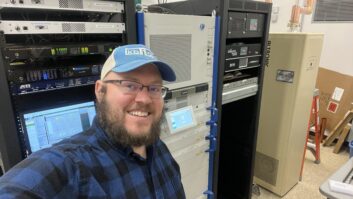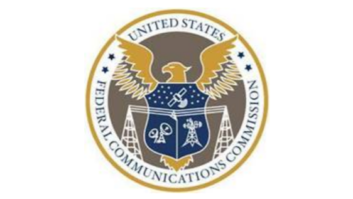New Tower Construction Update Mainly for the Birds
Dec 1, 2013 7:30 AM, By Kevin McNamara

Over the past two years there have been some significant changes to the federal regulations governing the construction of new towers. Most of these changes have come in the form of additional environmental review as required by Section 7 of the Endangered Species Act (ESA) of 1973 and by the National Environmental Policy Act (NEPA) of 1969.
The main problem, according to the avian community, is that certain species of birds are attracted to the red lights, mainly the old style that flash at a very low rate, which apparently disorient their natural guidance system. Particularly in the case of guyed towers, the probability of hitting the guy wires and tower are very high.
The FCC is also in the process of streamlining the application process for building wireless infrastructure. While most of this streamlining typically will affect only wireless/broadband carriers, there is a proposal to eliminate many of the barriers that prevented the deployment of temporary towers, particularly during declared public emergencies.
Before you apply for Antenna Structure Registration (ASR), members of the public must have the opportunity to comment on the potential environmental impact of your proposal. Rather than submitting a fully completed tower registration form (Form 854), you will need to submit a partially completed application and give local notice of the proposed structure through a local newspaper. Notification through the zoning public notice process may also suffice. Once the notice has been published, the FCC will post the partial application to its website. The public will have 30 days to post comments. Based on these public comments the FCC will make a determination of whether an Environmental Assessment (EA) will be required. This notification is required for any tower that requires an ASR.
Environmental notice is also required if you propose a change of lighting to an existing tower. If an EA is required for a proposed structure the EA will be considered in context of the entire structure, rather than a service specific, there is also an interim procedure that requires an EA for changes to any tower over 450′.
The U.S. Fish and Wildlife Service (FWS) has also published guidelines and created a “tower site evaluation form” that will aid in the identification of potential flags in the EA process. The form is available at fws.gov/habitatconservation/tower_site_evaluation_form.pdf.
– continued on page 2
New Tower Construction Update Mainly for the Birds
Dec 1, 2013 7:30 AM, By Kevin McNamara
The US FWS guidelines can be found in full at fws.gov/habitatconservation/communicationtowers.html. In short:
1. Construction is strongly encouraged on existing communication towers or other structures.
2. New construct towers are strongly encouraged to be no more than 199′ above ground level, using construction techniques that do not require guy wires, and unlighted (if Federal Aviation Administration regulations permit).
3. When constructing multiple towers, providers should consider the impact of each tower and collective towers to threatened and endangered species.
4. If at all possible, new towers should be sited within existing clusters of towers. Towers should not be sited in or near known bird concentration areas, in known migratory or daily movement flyways, or in habitat of threatened or endangered species. Towers should not be sited in areas with a high incidence of fog, mist, and low ceilings.
5. Towers above 199′ AGL requiring lights for aviation safety must be constructed with the minimum amount required of pilot warning and obstruction avoidance lighting. Unless otherwise required by the FAA, only white (preferable) or red strobe lights should be used at night, and these should be the minimum number, minimum intensity, and minimum number of flashes per minute allowable.
6. Tower designs using guy wires for support should have daytime visual markers on the wires to prevent collisions.
7. Towers and appended facilities should be sited, designed and constructed so as to avoid or minimize habitat loss within and adjacent to the tower footprint. However, a larger tower footprint is preferable to the use of guy wires in construction.
8. Relocation may be recommended if significant numbers of breeding, feeding, or roosting birds are known to habitually use the proposed tower construction area. If this is not an option, seasonal restrictions on construction may be advisable in order to avoid disturbance during periods of high bird activity.
9. New towers are encouraged to structurally and electrically accommodate the applicant/licensee’s antennas and comparable antennas for at least two additional users, unless this design would require the addition of lights or guy wires to an otherwise unlighted and/or unguyed tower.
10. Security lighting for on-ground facilities and equipment should be down-shielded to keep light within the boundaries of the site.
11. Service personnel or researchers from the Communication Tower Working Group should be allowed access to the site.
12. Towers no longer in use or determined to be obsolete should be removed within 12 months of cessation of use.
Streamlined application process
On Sept. 26, 2013, the FCC released a notice of proposed rulemaking to address and update its rules and policies relating to wireless infrastructure builds streamlining environmental and historic preservation review procedures. This proposed rule change(s) are intended to speed up the deployment of new and emerging wireless technologies, they include:
� An expansion of the current exclusions to EA review. Under the current rules it is permissible to mount new antennas on a building (providing public exposure to RF is below prescribed limits) or existing tower structures. Under the new proposal, there would be no requirement for an EA on new antennas mounted to any type structure, providing the public exposure to RF is below the limit.
� Categorical exclusion of small cell and DAS (Distributed Antenna Systems) from the Historical Preservation Review process.
� Waiver of the Environmental notification process for temporary structures that meet the following criteria: Will be in use for 60 days or less; requires notice of construction to the FAA; does not require marking or lighting pursuant to FAA regulations; will be less than 200′ in height; and will involve minimal or no excavation.
McNamara is president of Applied Wireless, Cape Coral, FL.
December 2013
Interoperability standards for IP audio, a Seacrest Studio opens in Cincinnati, the FCC catches up on work, insight to HD Voice, and a rundown of portable recorders….












